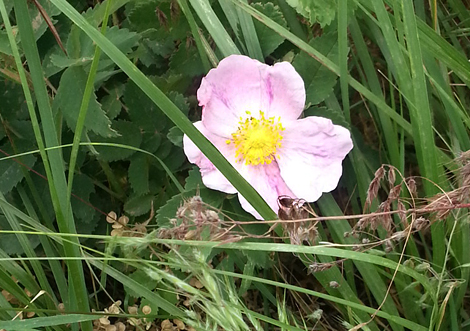Bike Beat
by Paul Murphy
Powered Mobility Devices in JCOS Parks
In response to a mandate from the federal level, Jefferson County Open Space has released its guidelines regarding the use of “mobility devices” in JCOS parks, and on JCOS trails. In short, persons with disabilities related to their mobility are permitted to access JCOS properties using powered devices of their choice. This does not mean that all parts of the park or every trail will become subject to this requirement, since it is not required that JCOS make alterations that “would fundamentally alter the nature of [its] service, program, or activity”, as stated in the regulation.
What it does mean is that we can expect to see people enter the parks and utilize some of the trails using powered devices, which might seem surprising at first, but, since this is a nationwide directive, expect to see adjustments to park policies pretty much everywhere. Rest assured that Segway in the Park is an approved activity, and it does not imply any other changes to park policy, beyond the accommodation of people with mobility issues. For a large volume of additional information, please see the following pages:
jeffco.us/openspace/openspace_T56_R168.htm
www.americantrails.org/resources/accessible/Summit-County-CO-policy-OPDMD.html
Priority Park: North Table Mountain – But What About Reynolds?
Although not always thought of as a destination park for mountain bikers, North Table Mountain has been selected as a “priority park” on which Jefferson County Open Space will focus resources this summer. We can expect continued activities at North Table Mountain Park as JCOS staff continue to implement the development plan for this park. The work will include further changes to familiar routes, as some existing trails are not on JCOS land. Resources are expected to be concentrated at North Table until implementation is complete.
Reynolds Park, where opportunities for mountain biking do not currently exist, will be affected by the focus on North Table, since resources will be shifted to the work at North Table Mountain. This is noteworthy to mountain bikers, since it will delay by perhaps a year the opening of a new regional connector trail, definitely slated to be multiuse and available for MTB use. This new trail, when complete, will make it possible to ride all the way from the parking lot at Waterton Canyon West on the Colorado Trail, then North on the connector all the way to Reynolds Park, between Foxton and Conifer. Also one can ride from Reynolds Park on the connector to the Colorado Trail, then West to South of Buffalo Creek and then North to Pine Valley Ranch. Taking the road from Pine Valley Ranch through Pine and Foxton will allow one to complete a loop to Reynolds Ranch.
Expanded Avenues for Public Participation
At the most recent Trail Users Forum, conducted on May 17th, Open Space Director Tom Hoby and JCOS staff outlined some thoughts on a coming initiative to expand the opportunities for the public to offer input and suggestions regarding the trail system and its management. Beginning with a broad review of the myriad of existing avenues and volunteer programs through which the program receives feedback from the public, Mr. Hoby suggested that additional opportunities, created specifically for the purposes of exchanging feedback and information regarding the trails, could be created. The program would follow the theme of promoting safe and enjoyable trail experiences for all users, while protecting resources. The precise nature of this program and specifics regarding its structure are yet to be determined, but it is expected that broad participation will be encouraged. Additional details regarding this program and opportunities for participation will be communicated in this space as information becomes available.
Volunteer Trail Days with JCOS
As always, there are a number of opportunities to volunteer on the trails with Jefferson County Open Space this season. For more information, go to trails.jeffco.us and click on “Volunteer Trail Days” to see Saturday events, or head over to minicrew.org for options occurring Thursday afternoons-evenings.

 When long-time OSAC Chairperson Greg Stevinson stepped down from this post as OSAC Chair in 2009, prior to the end of his term, Jan Wilkins and Wayne Forman – also seasoned veterans of OSAC, stepped up to co-chair the Committee. Finding that they worked together so well, they requested that this ruling structure remain in place, but alas…bylaws are bylaws, and OSAC doesn’t allow for co-chairing. So Wayne stepped into the Chairperson position, and Jan is now a Co-Vice Chair with Ken Morfit.
When long-time OSAC Chairperson Greg Stevinson stepped down from this post as OSAC Chair in 2009, prior to the end of his term, Jan Wilkins and Wayne Forman – also seasoned veterans of OSAC, stepped up to co-chair the Committee. Finding that they worked together so well, they requested that this ruling structure remain in place, but alas…bylaws are bylaws, and OSAC doesn’t allow for co-chairing. So Wayne stepped into the Chairperson position, and Jan is now a Co-Vice Chair with Ken Morfit.

